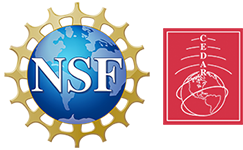2025 Workshop: Wave-Mean Flow Coupling Across Scales
Larisa Goncharenko
Federico Gasperini
Pierre-Dominique Pautet
Ludger Scherliess
Yucheng Zhao
The dynamics of the middle and upper atmosphere and its coupling to tropospheric weather and climate are inherently tied to a broad spectrum of atmospheric waves. In this process, sub-seasonal to decadal variations play an important role. Understanding the response of large-scale circulation patterns to sources of sub-seasonal variability, such as the Madden Julian Oscillation (MJO), seasonal variability, such as the Semi-Annual Oscillation (SAO), interannual variability, such as the El Nino-Southern Oscillation (ENSO) and Quasi-Biennial Oscillation (QBO), or those at lower frequencies as decadal variations, requires disentangling multiple possible atmospheric coupling pathways. In this session, we broadly invite presentations that examine variabilities in the lower, middle and upper atmosphere across different time scales, from sub-seasonal to decadal, and their interactions. We particularly encourage studies that examine tropical-extratropical teleconnections, interactions between gravity, planetary, Kelvin, and tidal waves with the global circulation, the impact of middle and upper atmosphere dynamics on tropospheric weather, and the role of the stratospheric polar vortex in modulating these processes. We welcome contributions employing ground-based and space-based observations, as well as numerical model simulations including those that place these processes in the context of future climate scenarios.
Thursday, June 26, 10:00-12:00; Room 318
Zoom: https://usu-edu.zoom.us/j/89207069288?pwd=jgguKuDCMibUE1adpNfzyE0ANDgy2a.1
Meeting ID: 892 0706 9288
Passcode: 722401
10:00-10:14 Christopher Krier (NASA)
Wave Driving of the Easterly Phase of the Mesopause Semiannual Oscillation around March Equinox Simulated by a High-Resolution Configuration of the WACCM-X
10:14-10:28 Dupinder Singh (MIT Haystack Observatory)
QBO imprint on Ionosphere-Thermosphere
10:28-10:40 Jia Yue (NASA)
Estimation of adiabatic warming and cooling in the mesosphere and lower thermosphere
10:40-10:54 Valery Yudin (NASA)
Tidal and Mesoscale Dynamics of FV3WAM: Diagnostic and Evaluation of Resolved Waves and their Interactions
10:54-11:10 Erdal Yiğit (GMU)
Effects of tropospheric and non-tropospheric gravity waves on the atmosphere and comparison with ICON/MIGHTI Winds
11:10-11:24 Deepali Aggarwal (Clemson University)
Modulation of Ionospheric Lunar Tides by Sudden Stratospheric Warmings
11:24-11:38 Claire Gasque (UC Berkeley/Space Sciences Laboratory)
Thermospheric Solar Terminator Waves: Climatological Observations and Variability
11:38-11:52 Sunil Kumar (Clemson University)
Response of Migrating Solar Semidiurnal Tide Hough Modes to Arctic and Antarctic Stratospheric Polar Vortices.
11:52-12:00 Discussion
Atmospheric waves, primarily excited in the lower atmosphere, play a key role in coupling different layers and regions of the atmosphere through energy and momentum transfer. Moreover, nonlinear interactions among waves of varying scales can give rise to diverse secondary waves. It is crucial to disentangle the multiple atmospheric coupling pathways. This workshop seeks the expertise of the broader CEDAR community to bridge the variability across different scales with the dynamics of the middle and upper atmosphere by addressing three key scientific questions using ground-based observations, satellite observations, as well as numerical model simulations.
1) How do variations across sub-seasonal, seasonal, interannual, and decadal timescales shape middle and upper atmosphere dynamics?
2) What are the contributions of gravity waves, Kelvin waves, Rossby waves, and tides, and how do these waves interact with the mean flow and with each other?
3) How do decadal variations impact the shorter time scale variability in the middle and upper atmosphere?
